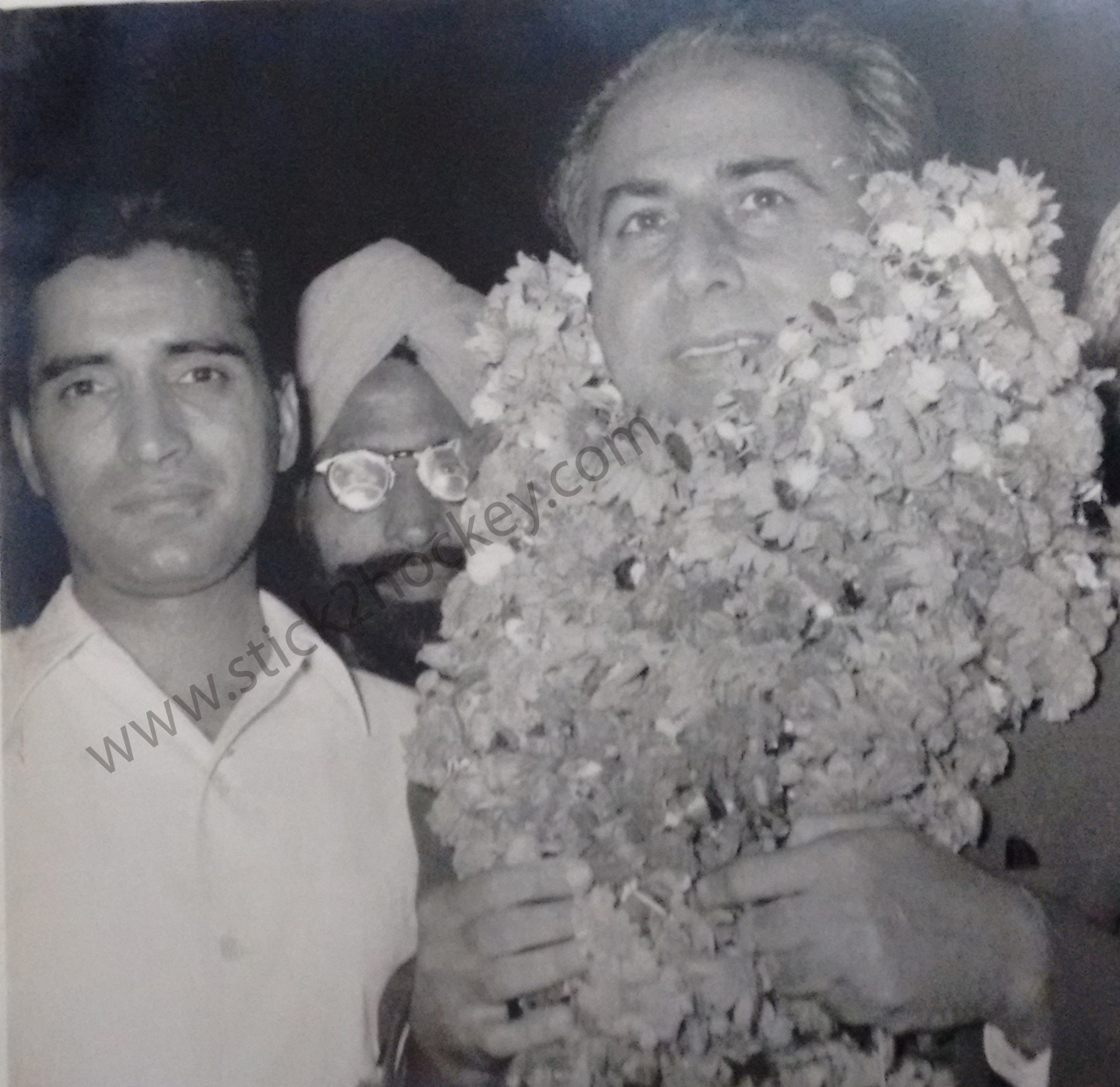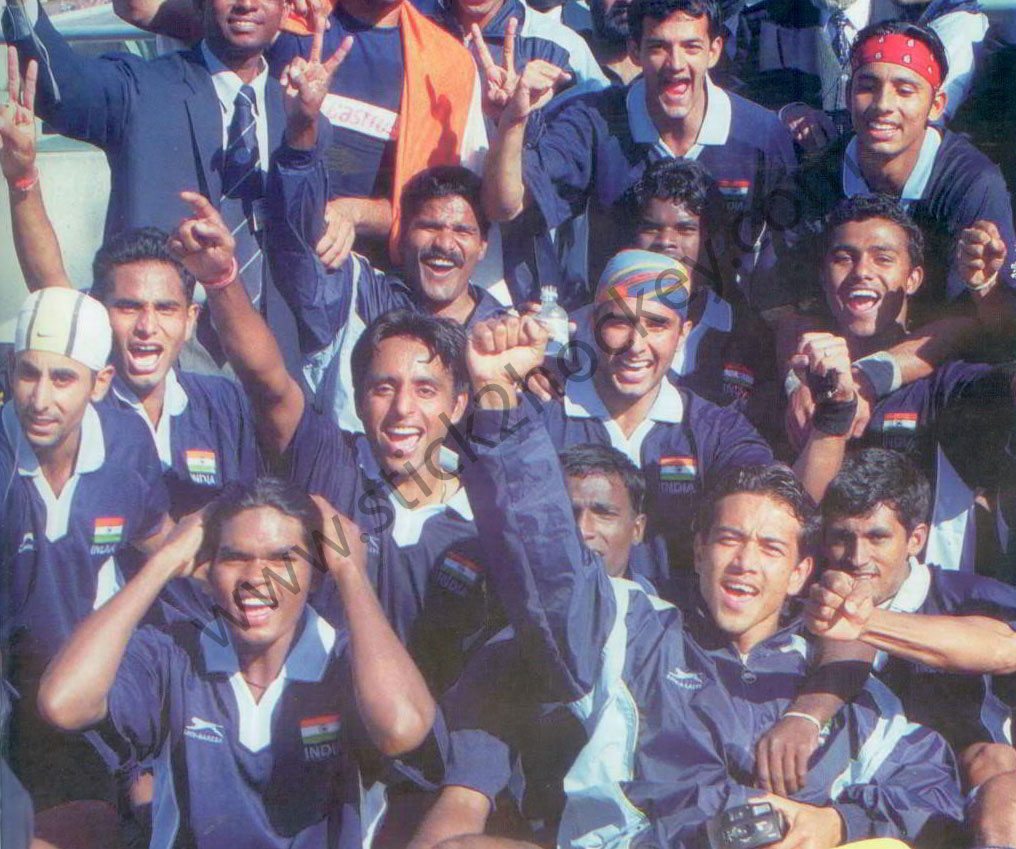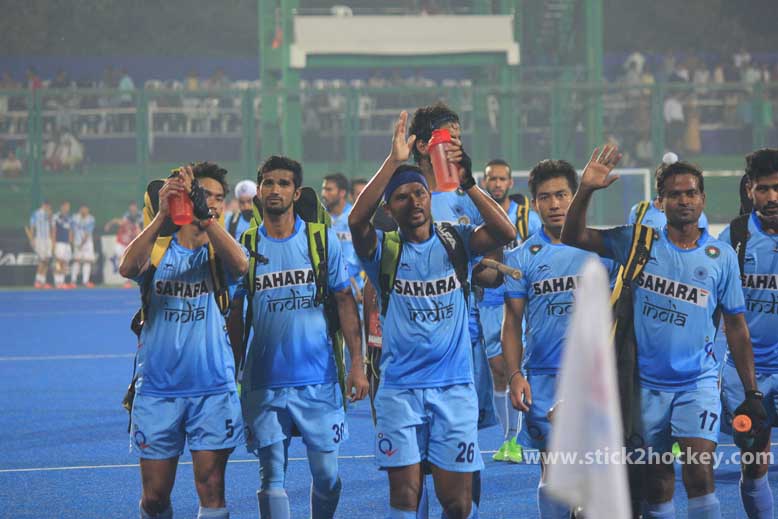HISTORY: Hockey as India turns 70
Share
HISTORY: Indian hockey in the last 70 years
India celebrates 71st anniversary of its political independence today. Its image then was poor. Considering its extremely stratified society, Partition, recurring famines, all round poor literacy rate, social unrest and omnipresent loot (dacoity, mostly unleashed by the Kingdoms who had to relinquish their power to elected ones), most predicted doomsday for India. Stats supports their stand. But the world’s largest democracy, not a sham kind but true in letter and spirit, grew from chrysalis of darkness to the world’s fastest growing economy.
Literacy Rate: 17% in 1947. Now 73%
Life expectancy: 32 years. Now: 68.34 Years
Per capita income: Rs.247 per year. Now: 1,03,219 per year
The growth is amazing: Self sufficiency in food grains, advances in science and technology especially space, Information Technology and atomic energy.
If India is a growth story what is the story of hockey? Is it part of the grand growth story or otherwise?
Here it is important to trace major milestones that made or mar our field hockey in the last 70 years.
LEGACY ERA: Otherwise Tata Era. Partition of Indian sub-continent witnessed migration of hockey talent from both borders. It is difficult to say which one benefitted more. Hindsight points to India. Contrary to widely believed notion, Indian hockey benefitted from Partition. Thus, it deprived Pakistan of its talent such as Balbir Singh Sr. (triple Olympic gold medallist), Keshav Dutt (twice Olympic gold medallist) to quote a few while retaining remaining core of Anglo-Indians. Significantly, Hockey was run on pure amateur lines in this era. Fitness, skills, livelihood are individual players concern. Still, there were difficult times to send teams to Olympics. Benevolence of industrial biggie in Naval Tata helped India to continue its show at Olympics which it last played 16 years ago in Berlin. That time Princes and Kings donated for hockey’s Hitler story. The Tata legacy continued for about a decade after Independence in which India won three Olympic titles (1948, 1952, 1956), to make it a total SIX. It was remarkable, as China would win its first Olympic Gold in 1984! The adminos did every trick to mobilize funds which included Sunday Rolls, mortgage of personal properties, year-long donation / charity campaigns, over-subscription from State units etc.
TRANSFORMATION ERA: Otherwise Ashwini Kumar era: For the first time in the late 50s, Govt of India entered the sports scene with forming a policy making body, All India Sports Council, for which Naval Tata was requested to head. This helped an undivided Punjab (Punjab, Haryana, Himachal Pradesh were together) Police Officer Ashwini Kumar to head the historic Indian Hockey Federation. His leadership coincided with hockey getting into the Asian Games fold (1958). His ascension also marked a trend of Police dominating the hockey administration, which proved in the later stages a questionable one, if not unproductive and unprofessional. Ashwini Kumar being close to the then PMs — Jawaharlal Nehru and Indira Gandhi — and also Patiala clan which controlled the Indian Olympic Association (IOA), could get tours cleared on govt costs. Thus, hockey moved from public funding era to Govt dependent one. Further, Government was prevailed, or made to believe, that unless it offers permanent jobs to sports persons, sports cannot grow. PIC: Tata and Ashwini Kumar.
Instead of rooting for infrastructure and sporting culture, sports’ focus was thus diverted to individual achievers. It took ugly turns as decades went by. Further, this is how sports was prevented from becoming a way of life in our society, instead became a way of livelihood. However, hockey is the chief beneficiary of such policy formulation. For almost four decades, hockey offered huge employment opportunities compared to any other sporting discipline. Army, Air Force, Navy, Indian Railways, Provincial Police, Postal, Banks and even Airlines had formed their own teams. Ashwini Kumar ruled hockey for almost one and half decade. Indian hockey teams never returned without medals at Olympics, World Cup or Asian Games in that spell.
ERA of FALSEHOOD: The three decades from the mid 1970s is conspicuous for rigid mentality and false propaganda. People who mattered in hockey, refused to accept dawn of modern hockey. Indian thinking in the 70s and through next two decades was shaped by our medallist-players’ ill-conceived opinions, decisions taken based thereon.
These legends who lived in their own, self-glorified world could not see the changes taking place in the game world over, and even if they could see, were clueless as to how to go about it. Change of playing field from grass to turf, mushrooming of tournaments (which necessitated fitness of players), changes in the playing techniques and tactics where defence played big role, so also penalty corners and its super executioners, were considered ‘White Ploys’ and every defeat was accordingly analyzed. They never accepted defeat because of such ‘self-belief’, and thus never allowed victory on our soils. This blinded both the bureaucracy and the IHF, who had to go by the media driven former player’s opinion. Thus, real issues got diverted, India went on to lose its grip on the international stage quickly. India finished last in the World Cup within ten years after winning it. Indians fared very badly in the 1978 and 1981-82 World Cups which were also played on grass, but still the Indians attributed all the defeats to turf. The need was to learn from others, to import foreign coaches, but such wisdom was considered anti-national in this era of Falsehood. Former players, not always holy cows, but with vexed interests, continued to have their say. Thus, after every major defeat, two things would definitely occur: a new department starting hockey team and a sitting coach sacked. Ultimately, every former player of repute in India has come a former national coach too! These were the hall marks of regimes led by MAM Ramasamy, IM Mahajan and RN Prasad (1975 to 1993).
WAY FORWARD BUT WAYWARD ERA: Otherwise KPS Gill Era. Early 90s saw Indian economy liberalized. Around same time, public opinion propelled the then super cop KPS Gill to steer Indian hockey to glory. For the first time, tours were undertaken even without Govt funding. Efforts were made to bring corporate funding with fair amount of success. Novelty was ushered in in the form of Premier Hockey League (PHL).
However, this era of just-short-of-two-decades is known for its solid work on junior hockey. Indian juniors were all over the world touring — and making marks. India went on to play the finals of the two successive Jr World Cups after winning all age group titles at home Continent. These dwarfed the Asian Games gold that came after 32 years in 1998. However, the IHF ignored the domestic hockey: even mandatory National Championships were not held. As we saw early, Indian hockey survived because of its job market potential. Govt Departments required medal or participation in the Nationals for any job. It affected hockey fraternity due the IHF’s disinterest in Nationals. Job seekers found a short cut, hid in Junior colours. Things went such a pass that substantial chunk of players would remain juniors till they land in a job! Yes, age manipulation reached alarming proportion. This grew like cancer which is eating away the essence of contemporary hockey too. What started as a crisis management has become now a well institutionalized crime about which everyone turns blind, as show must go on is the attitude. (PIC: First Indian team to win the Jr World Cup. Year 2001.)
ERA of AFFLUENCE: Otherwise HIL Era (Hockey India League). Like in the early 70s, the late 2000s saw protracted battle for the IHF mantle after India failed to qualify for the Olympics in 2008 Qualifier. Simply put, it costs the existence of the 80-year old IHF itself. A new dispensation called Hockey India, promoted by the Indian Olympic Association with the blessings of Federation Internationale de Hockey (FIH), came into being.
Narinder Dhruv Batra was its face after either parallel state units were formed or old ones changed it constitution, and elections were held. The issue was settled almost six years after the Court of Arbitration for Sports (CAS) ruled in HI’s favour. The FIH, which saw huge potential in Indian hockey to improve its global profile, despite change in the top post (Els van Breda Vriesman to Leondro Negre), came out in a big way to boost Indian hockey. Major tournaments were allotted to India. Simultaneously, India was hosting the Commonwealth Games. Government of India opened its purse in creating hockey infrastructure and also for training purposes. The training budget increased to 700 Cr from 70! Indian hockey players were put on hotels during training, buses allotted to fetch them to stadiums, kits and allowances came aplenty. Govt also promoted import of foreign brains. Hockey India, even as it was fighting its rival on one side, went on mission mode.
It did not bog down by the history, invited bids from globe’s top coaches and support staff, and went by what the imported brains wanted. Technical people were sent as manager. Team selection on every tour paved way for Core Group Concept. Therefore the issue of dropping players very much reduced, though controversies occurred here and there. Nationals were held on time. Domestic structure streamlined. Every win was monetarily rewarded. Players cared, and felt being cared. Besides, League was the demand of time. The IHF was the first National Federation in India to put on board a League, the PHL much before ICL and IPL. Therefore, its challenger HI needed to put on board a better proposition, and it was what later turned out to be a global stunner, Hockey India League. For a short, the WSH, a rival League, got national level players’ nod. For the first time National Federation (HI) signed contract with players to counter it on long term. Players till then were taken for granted. Money therefore has to be there, and it was there in the HI’s scheme of things. The FIH allotted a window for HIL. In the hockey world, Player Auctions were held for the first time: India’s and the world’s best got unimaginable bids even crossing USD 100,000 per season. India hosted Jr World Cup twice, HWL Finals twice, Champions Trophy and Sr World Cup once, every one of them title-sponsored by an Indian corporate. From the watershed 2010 World Cup to now, India was the unofficial hub of world hockey.
Does Era of Influence await India?
This is the million dollar question, but a logical corollary. The novelty and the professionalism that went with the epoch making HIL helped Batra to win the FIH election handsomely. He is the first Indian to head an international federation. Certainly he is an influential figure. However, the real influence will have to come from the players, they need to win medals at major tournaments for that to happen. So far their feat did not match the efforts that had gone behind. Unless Indian national team start winning, big market may elude hockey without which India cannot assert influence anymore. At present, a veil of secrecy pervade in HI’s manoeuvres. India opted out of Pro League, halted the HIL. Whether are they some master strokes or strains of wear and tear could not be made out. But, the hockey world eagerly await what India is upto, and the Pro League can be successful without it? Isn’t the first sign of Influence?








